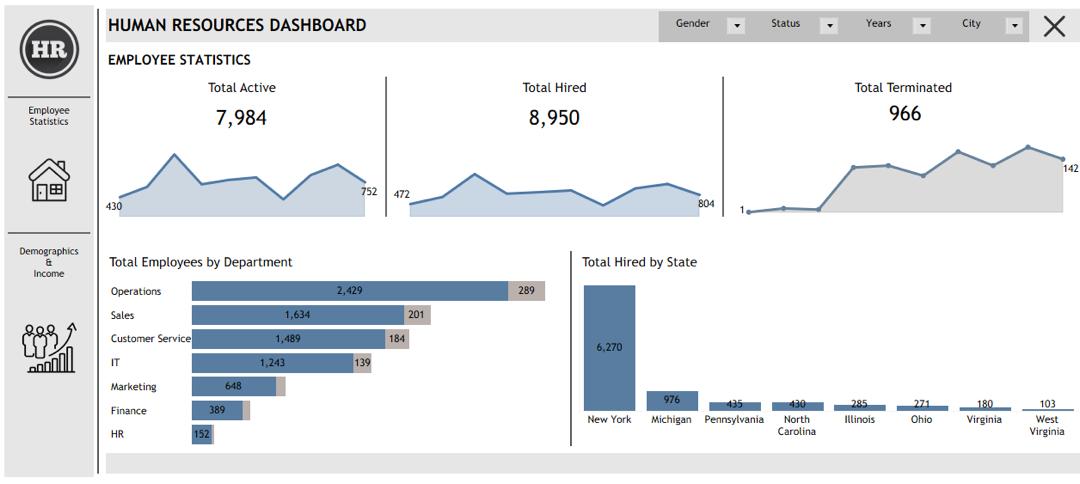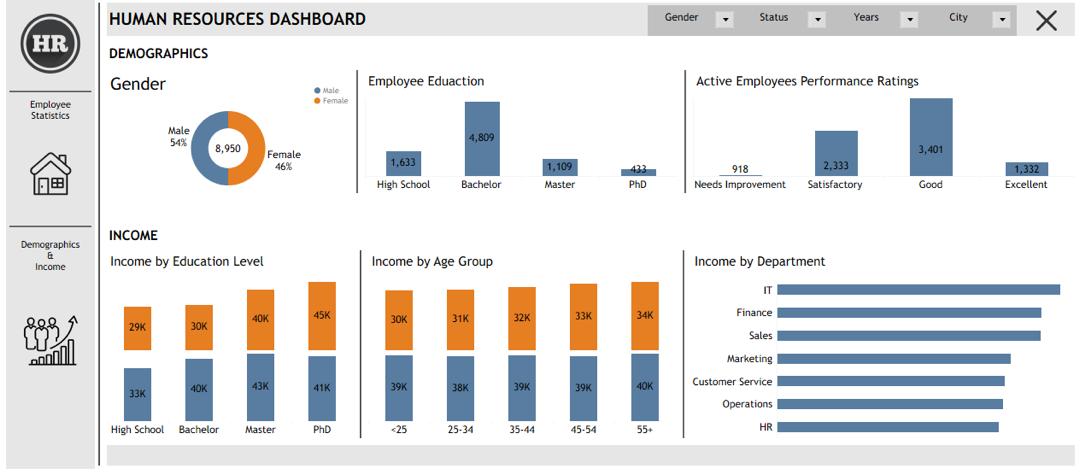This report presents a detailed analysis of employee-related metrics based on the
company's Human Resources Dashboard. It encompasses statistics on workforce activity,
departmental distribution, state-level hiring, employee demographics, performance ratings,
educational qualifications, and income patterns. The visualizations used to derive these
insights provide a comprehensive view of the HR landscape, enabling data-driven decision-
making for workforce planning and management.
Click here to view more of the project on Github

